Game On: How ChyronHego uses imaging technology to create an improved sports experience
When the San Francisco 49ers kicked off against the Kansas City Chiefs in the 2020 Super Bowl, Fox Sports had more than 100 cameras on hand to catch every aspect of the game. Included were more than two dozen Super Motion cameras designed to capture the action at up to 1,800 frames per second, two SkyCams, and one high-speed camera to capture the entire game in 8K for the first time. That marks a huge leap from just five years before, when 40 cameras were deployed at the 2015 Super Bowl.
But the sheer number of cameras inside a stadium tells only part of the story of how imaging technology is changing how contemporary sports broadcasting captures the action on the field, pitch, diamond, or rink, and how it’s also influencing coaching, and the actual playing of the game.
Today, professional sports is much more than just a competition between players or teams. It has become a huge industry – with fans who are willing to spend a lot of money to be entertained and experience the action in the best possible way. Top sport clubs generate a big share of their revenues from TV rights and commercials, and the more interest they attract, the more money they can make. Consequently, clubs and leagues are open to investing in technologies that can help improve athletes’ performance as well as how audiences experience the events.
ChyronHego is a pioneer in the field of real-time sports analysis, offering comprehensive solutions to the growing demand for data collection and analysis in professional sports. Their TRACAB -optical sports tracking system is a robust, scalable, distributed camera system that has been integrated into more than 300 stadiums, capturing 4,500 games per year. In soccer, it’s used by the German Bundesliga, the Spanish La Liga, and in international UEFA and FIFA tournaments. It has also been deployed in MLB and NFL stadiums.
According to the company, TRACAB optical sports tracking can “guide teams to make important decisions that improve their athlete’s fitness level, reduce injuries, learn more about tactical decisions, and ultimately improve their chances of success.”
TRACAB utilizes non-intrusive technology to assist coaches, physiotherapists, and managers in collecting real-time data for performance optimization and athletic engagement. Dedicated, static cameras in the stands of the stadium combine to deliver a unique data capture and analysis system capable of calculating player and ball position live. This data is instantly available for play-by-play video analysis and compelling graphical visualizations.

Highest level of accuracy
TRACAB uses Super-HD cameras and patented image processing technology to deliver live tracking of all moving objects with extremely low latency and a delay of just three frames. Based on stereo technology, a minimum of two compact TRACAB Super-HD camera units can constantly capture on-field action from several angles. The system can scale to camera units on all four sides of the stadium where the cameras can be positioned on the opposite sides of the playing surface and behind each goal. The combination of these four angles is one of the factors that contributes to ChyronHego’s innovative approach.
Capturing a game is just the first step of the solution. “Our cutting-edge software analyzes every image to extract X, Y, and Z positions for each object on the field, resulting in true three-dimensional tracking of all players, the referees, and the ball in real time”, says Dr. Eric Hayman, Chief Scientist at ChyronHego. “The system calculates the center of gravity of all objects 25 or 30 times a second, reaching an accuracy of about 8 centimeters, which has been tested and certified by independent sources.”
In January, ChyronHego announced that Gen5 had been certified by the new FIFA Quality Program for EPTS (Electronic Performance and Tracking Systems) for the global football industry. The company’s news release stated: “Of the four tracking systems to achieve this certification, TRACAB Gen5 is the only optical tracking system to be qualified and to demonstrate clear industry-leading results.”
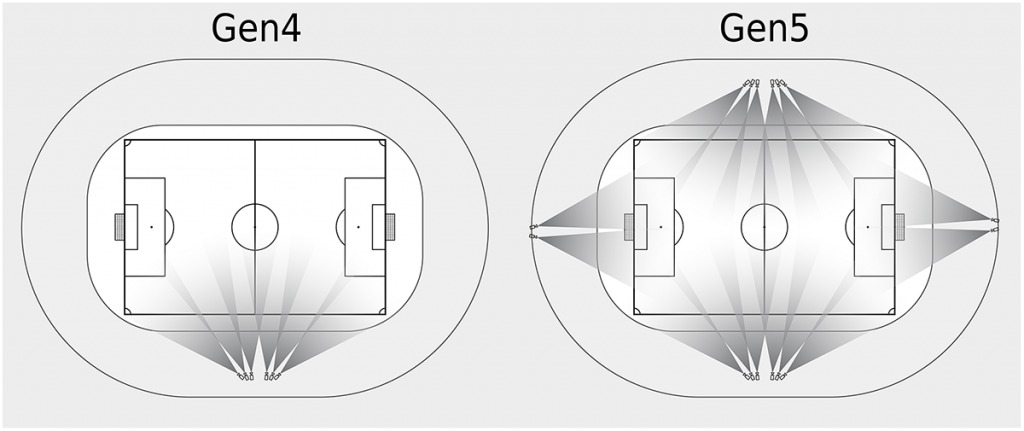
Reliable camera partner
ChyronHego introduced the first TRACAB generation in 2005. “With the developments of further generations, we were able to extend our customer base and to realize more and more successful installations,” says Hayman. “Formerly we had used two stereo clusters of three HD cameras each in the arenas, closely situated to each other with distances between 10 and 20 meters. With the recently introduced Gen5 optical sports tracking system, we typically have four or even six camera units—one or two on each side of the pitch—which had quite an impact on our requirement on the cameras. We wanted to make cabling simpler, and we wanted to use global shutter technology in the cameras, which is essential for recording reliable images in sports where you have to capture scenes with high dynamic movements of the athletes and the ball.”
The cameras ChyronHego had used in former generations of the system didn’t serve all needed features, so the company started looking for alternatives, finally landing on Teledyne DALSA’s Genie Nano cameras.
“There were several reasons for taking that decision,” says Hayman. “First of all, Teledyne DALSA was able to offer a broad range of industry-approved camera models that supplied the robustness needed for outdoor applications faced in sports arenas and that reliably worked within a wide temperature range and under changing light situations. The multitude of available cameras also gave us the flexibility to easily diversify our systems wherever needed, for example by using camera models with different resolutions or frame rates when required. Last, but not least, we felt absolutely safe with Teledyne DALSA as a mature partner with lots of experience in the field of industrial and non-industrial imaging.”
After the first meetings and discussions about general features and specific camera requirements, Teledyne DALSA’s long-time partner and distributor, Stemmer Imaging recommended the Genie Nano 5GigE camera series for the TRACAB Gen5 system.
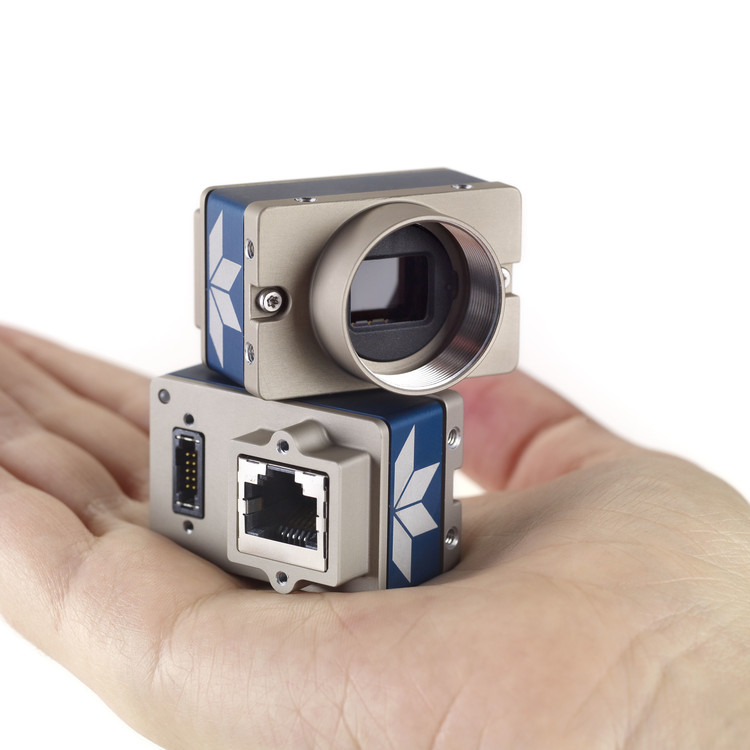
The TRACAB Gen5 system development has now been completed and deployed in the German Bundesliga and Spanish La Liga. In a typical setup it uses six camera units, each one equipped with a Teledyne DALSA Genie Nano camera with a 1936 x 1216 resolution and frame rate of 25 or 30 fps. One essential key to success for the ChyronHego application was the use of special features of the integrated camera software such as PTP synchronization.
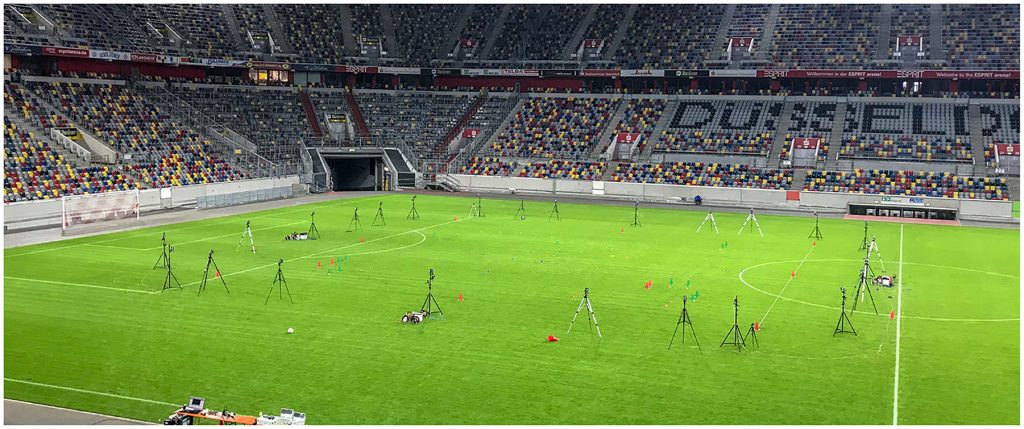
Improved performance
The collected data and subsequent information that can be pulled from the TRACAB Gen5 system opens up a lot of opportunities. Based on the athletes’ positions, speeds and accelerations, the system calculates the workloads of each player during a match, in real time, providing statistics like the number, distance, and intensity of sprints, or the total distance covered during a match. This information helps coaches decide when to substitute players before they have reached their physical limits. This also prevents players from injury caused by extending beyond their physical limitations. With the value of top sports stars having reached the three-digit million dollar/euro range, clubs must take care of their investments the best they can and protect them from missing games due to injury that could happen because of exaggerated high workloads.
Information collected during games also provides important facts for training sessions that can be visualized through additional tools such as Coach Paint, which offers a rich set of tools such as player cut-out, spotlight, zoom, zone tracking, and others. The captured data is processed via an open and versatile protocol, allowing it to be made available through any graphics rendering platform. Virtual features like Top Fonts™, Live Tracks™, and Magic Carpets™ are just some of the striking graphics that can be derived from real-time player tracking data. Equipped with these possibilities, coaches have powerful, easy-to-use, and easily understood means at hand to improve individual and team skills.
The TRACAB Gen5 tracking system not only helps optimize team and game performance, but also improves the media experience for fans on TV. Three-dimensional replays of important situations during a match, displayed from different angles, provide better insight and understanding for tactical details. It also gives broadcasters markers and options to highlight certain players when discussing tactical options or special situations of a game and explain them to the TV audience. The TRACAB system includes modules specifically designed for the extraction of in-depth statistics for a variety of sports, enabling broadcast graphics platforms to deliver analysis graphics such as heat maps, pass charts, or move types.
TRACAB Gen5 even enables improved sound, as Hayman explains: “We are able to track the players and the ball in real-time, and in the German Bundesliga this information is used to control microphones that are distributed in the arenas to get live sound from the active area on the field or when a ball gets hit. This automated audio mixing helps to sample the sound the media want and improves the live experience on the TV screens at home when watching a game.”
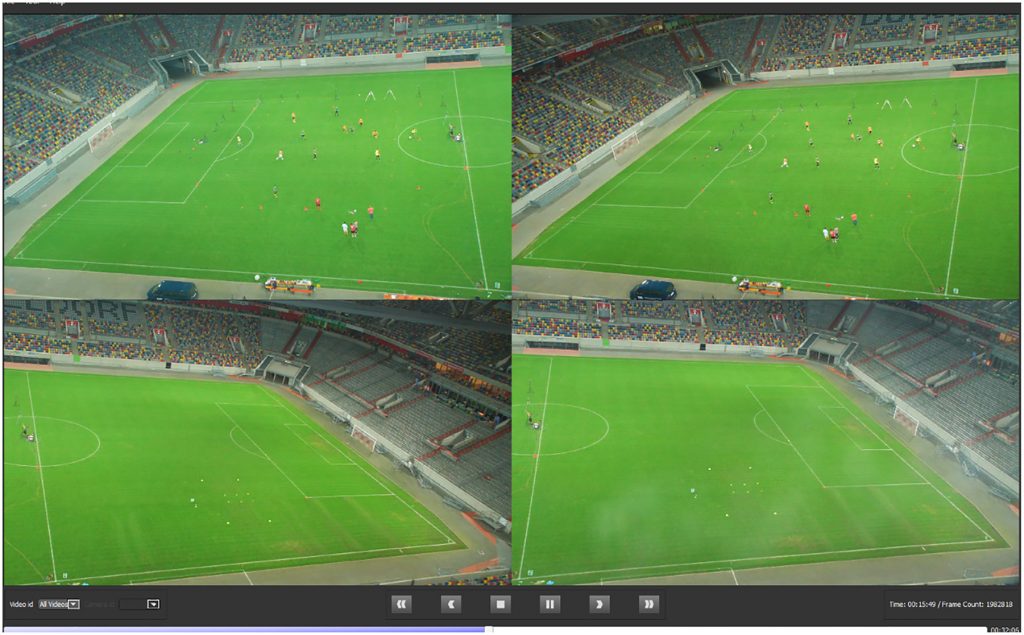
Further developments ahead
Even if TRACAB Gen5 already delivers amazing opportunities, ChyronHego is working on further improvements, says Hayman. “We’re planning to extend the system to limb tracking, which is a very exciting additional area for us. It means that we’re not only collecting and computing the center of gravity of each player, but also expand the details to the limb level to analyze a range of joints of each player’s body.” This stage will deliver additional information that can help the coaches to further improve their players and teams, for example by recognizing the orientation of the head of a player and being able to tell if he watches the situation and the players around him sufficiently.”
Hayman adds that this additional functionality will require more parameters, since it will have to recognize the position of several limbs—information that can’t be aggregated the same way that the positions of players are.
For that reason, ChyronHego will use a lot of artificial intelligence and deep learning technology to deliver meaningful data. Hayman’s hope is that the new technology will have the added benefit of helping players avoid injuries and allowing officials to make better decisions.
For viewers, this kind of enhanced experience already has a name: over-the-top (OTT) streaming, which speaks to the kind of interactivity and control young fans are coming to expect—and demand—on their mobile devices.
In a 2019 report entitled “The Future of Sports Broadcasting: Enhancing digital fan engagement”[PDF] Deloitte stated: “There are many similarities in how fans want to consume sports content from the stadium to broadcast and OTT streaming channels. Fans today are looking for even more technologically advanced and personalized solutions that will get them high-quality content, at the right time, through the right channel, and that will be paired with an authentic sense of being a part of a broader fan community.”
The report—published before COVID-19 forced the global shutdown of professional sporting events—concluded there were several options to consider if sports franchises and leagues want to protect their broadcast revenues and grow their fan base. These include: providing high-quality viewing access to fans, where they are based, and on their preferred device; establishing social interaction points for use during viewership; and developing technologies that allow fans to select key elements, including augmented reality and virtual reality enhancements, choice of announcers, camera angle options, and other alternatives.
For sports leagues struggling just to return to the pre-coronavirus status quo, that’s a lot to consider, but the watershed of new imaging enhancements couldn’t seem to arrive at a more opportune time.



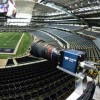 Real-Time 3D Replays Bring Fans Closer to Action
Real-Time 3D Replays Bring Fans Closer to Action 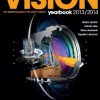 State of Play
State of Play 